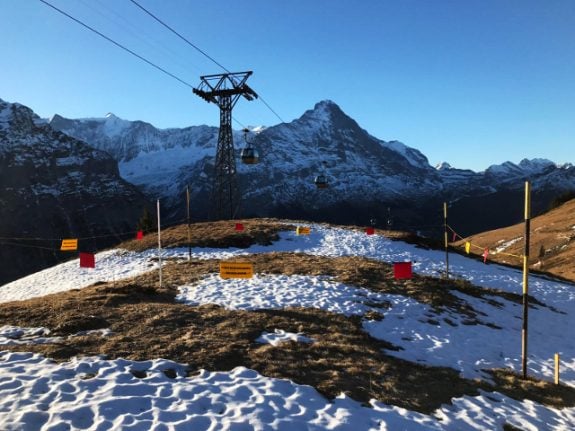WEATHER
Last Swiss winter was one of least snowy on record
As the ski season ends for another year, it will come as little surprise to many that the past winter in Switzerland has been described as one of the least snowy on record.
Published: 4 May 2017 09:04 CEST

Snow was distinctly thin on the ground over the winter. Photo: D Balmer/WSL
In its assessment of the season on Wednesday the WSL institute for the study of snow and avalanches said in a statement: “Despite the snow that fell in January winter 2016/17 was one of the least snowy winters every recorded.”
Though the season started well with snow in November, causing some ski resorts to open early, that was followed by one of the driest Decembers on record.
Snow finally returned in January, though the quantities were smaller than the previous year. However extremely cold temperatures meant it stayed around for a good few weeks, even at low altitude.
March saw significant snowfall, but mild temperatures meant it quickly melted, said the institute.
As a result “numerous ski resorts experienced the shortest continuous period of snow ever recorded,” it said.
The lack of snow did have one up side, however: there were fewer deaths from avalanches last season.
The institute announced the lowest avalanche risk indicator (1) twice as often as the average for the past ten years, it said.
By the end of April seven people had lost their lives in avalanches in Switzerland, 65 percent lower than the average of 20 victims per season across the past 20 years.
Among those seven, five were hikers and two were off-piste skiers.
A total of 148 people were caught in avalanches, 20 percent fewer than usual.
Url copied to clipboard!



 Please whitelist us to continue reading.
Please whitelist us to continue reading.
Member comments